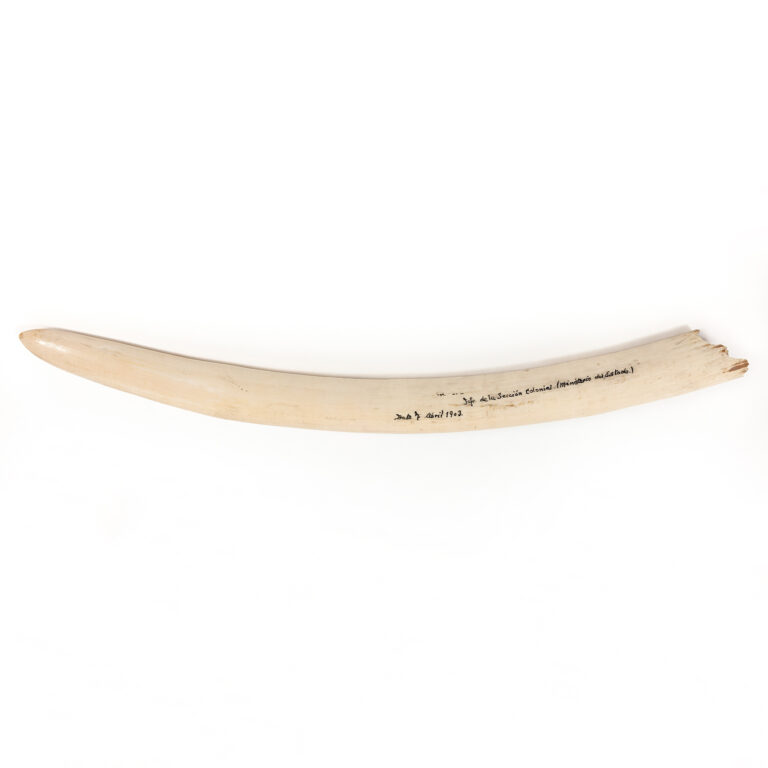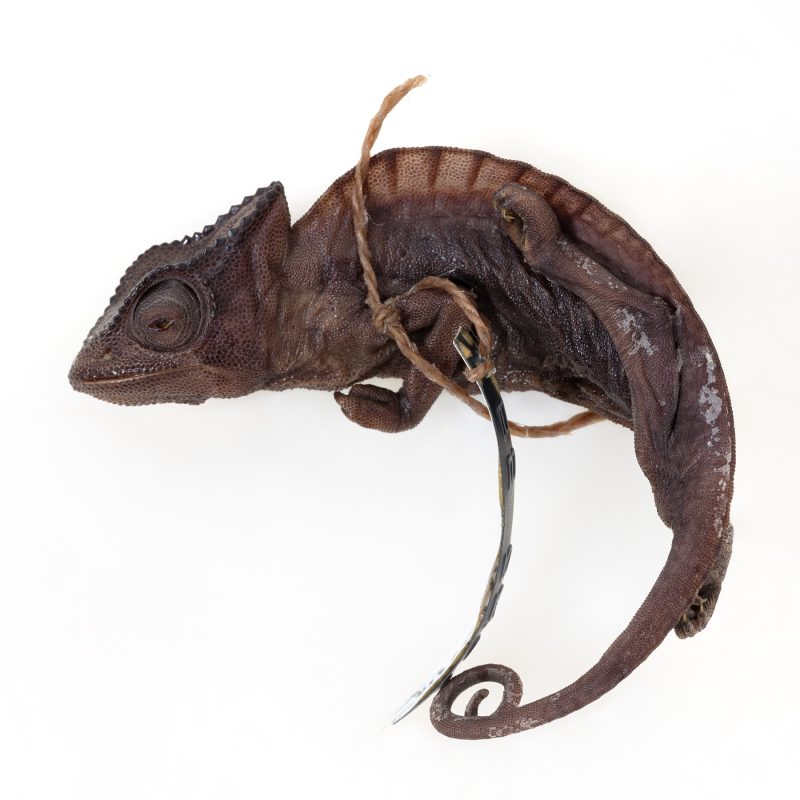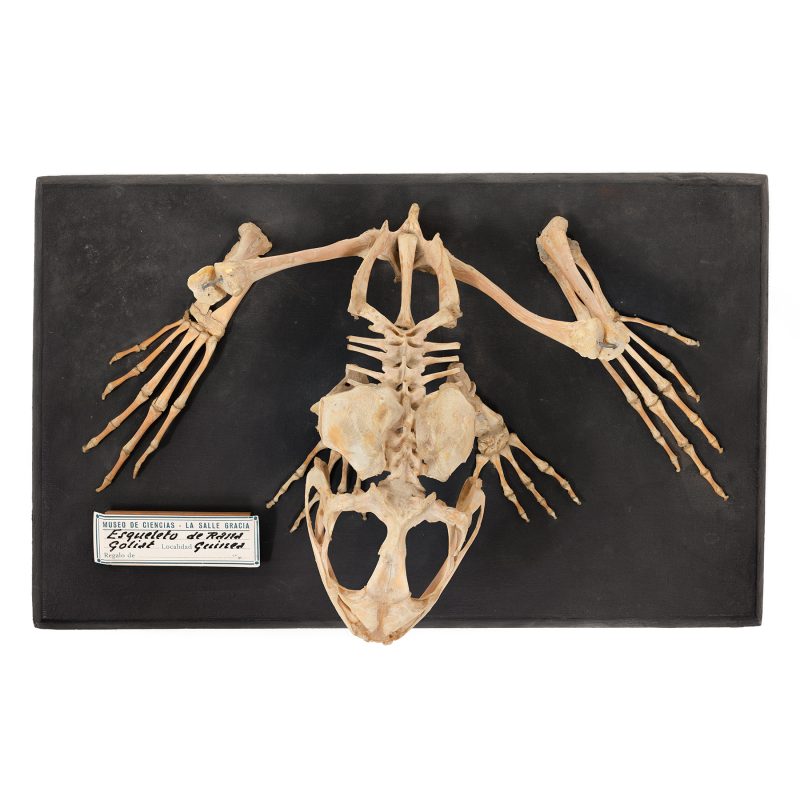Summary of results
Elephant incisor from an unknown source collected in 1903 in Bata, Equatorial Guinea. It is one of two specimens in the museum’s possession from Equatorial Guinea, according to its database. It has an inscription that reads ‘Head of the Colonial Section (Ministry of State). Bata 7 April 1903’.
Chronological reconstruction of provenance
Apart from the museum’s digital inventories, which classify the piece as an incisor collected on the same date as the inscription, 4 April 1907, we have no other specific information about its provenance.
Estimation of provenance
This elephant tusk comes from Equatorial Guinea, specifically from the mainland. We are unable to determine the exact location on the mainland. From the historical context in which it was acquired, we can speculate that it is a collection made for the head of the colonial section in 1903, although we do not have sufficient data to corroborate this.
Possible alternative classifications
In the Fang language, mbaŋ means «elephant fang».
In the Ndowe (Kombe) language, ubàngo u-a Rôku means “elephant fang”.
Complementary sources
Bibliography:
CITES (Convention on International Trade in Endangered Species of Wild Fauna and Flora) (1989). Proposal to Transfer All African Elephant Populations to Appendix I. Vegeu <https://cites.org/sites/default/files/eng/cop/07/E07-Prop-46_African_elephant.PDF > [consulta: ] .
Ramos Izquierdo, Luis, i Navarro Beltrán del Río, Eduardo (1912). Descripción geográfica y gobierno, administración y colonización de las colonias españolas del golfo de Guinea. Madrid: Imprenta de Felipe Peña Cruz.



